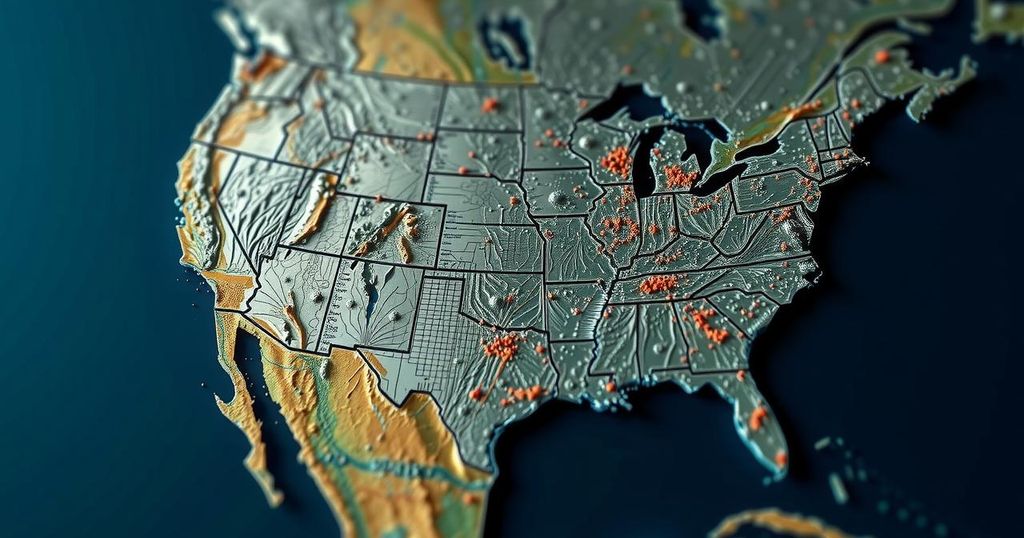A 4.4-magnitude earthquake occurred in Borrego Springs, California, on November 7, following significant seismic activity in regions including Greece and Hawaii. The USGS recorded multiple earthquakes across various locations, emphasizing the need for awareness and preparedness regarding seismic risks.
On November 7, a 4.4-magnitude earthquake struck near Borrego Springs, California, as reported by the United States Geological Survey (USGS). The tremor originated at a depth of approximately 9.8 kilometers, with the USGS recording 257 accounts from individuals who felt the quake. This event followed a series of notable earthquakes in various regions, including a 4.4-magnitude earthquake in Greece and a subsequent 4.8-magnitude quake in Hawaii, both occurring just days prior. On November 5, Greece experienced a quake centered in Chalandrítsa at a depth of 82.3 kilometers, hours before Hawaii’s tremor near Pāhala at 38.4 kilometers. The seismic activity continued with California experiencing a 3.3-magnitude earthquake on November 4 in Anza, at a depth of 12.1 kilometers. Earlier that same day, a 4.3-magnitude earthquake was reported in Chile’s La Serena region. This earthquake was preceded by a 3.7-magnitude quake in Steele, Missouri, centered at a depth of 10.5 kilometers, and a 5.3-magnitude earthquake in Greece’s Néa Poteídaia, at a depth of 10.0 kilometers. Furthermore, the recent seismic sequence linked back to a 6.0-magnitude earthquake documented on October 30 in Windsor, Oregon, which occurred at a depth of 10 kilometers. Situated just hours prior, a 3.2-magnitude earthquake struck Windsor at a shallower depth of 7.3 kilometers. These quakes traced back to a series of smaller earthquakes around California, including two events reported in Lompoc on October 28 and a 4.1-magnitude quake in Petrolia on October 24. This particular seismic activity illustrates the ongoing geological events that characterize various regions of the United States and the world. The interconnectedness of these events often highlights the need for heightened awareness and preparedness across affected communities.
Recent geological activities have been recorded across numerous regions, showcasing the dynamic nature of our planet’s crust. Earthquakes of various magnitudes provide critical data to assess seismic risks and enhance public safety measures. The frequent occurrences in areas such as California and Greece emphasize the importance of understanding tectonic plate movements, as well as the need for effective disaster preparedness strategies.
In summary, the series of earthquakes reported from California, Greece, Hawaii, Missouri, and Oregon over the past week highlights the Earth’s constant geological activity. With magnitudes ranging from 3.2 to 6.0, these events contribute valuable data for ongoing studies of seismic patterns. This underscores the importance of earthquake preparedness measures for communities situated in active regions to mitigate potential impacts.
Original Source: wsyr.iheart.com






